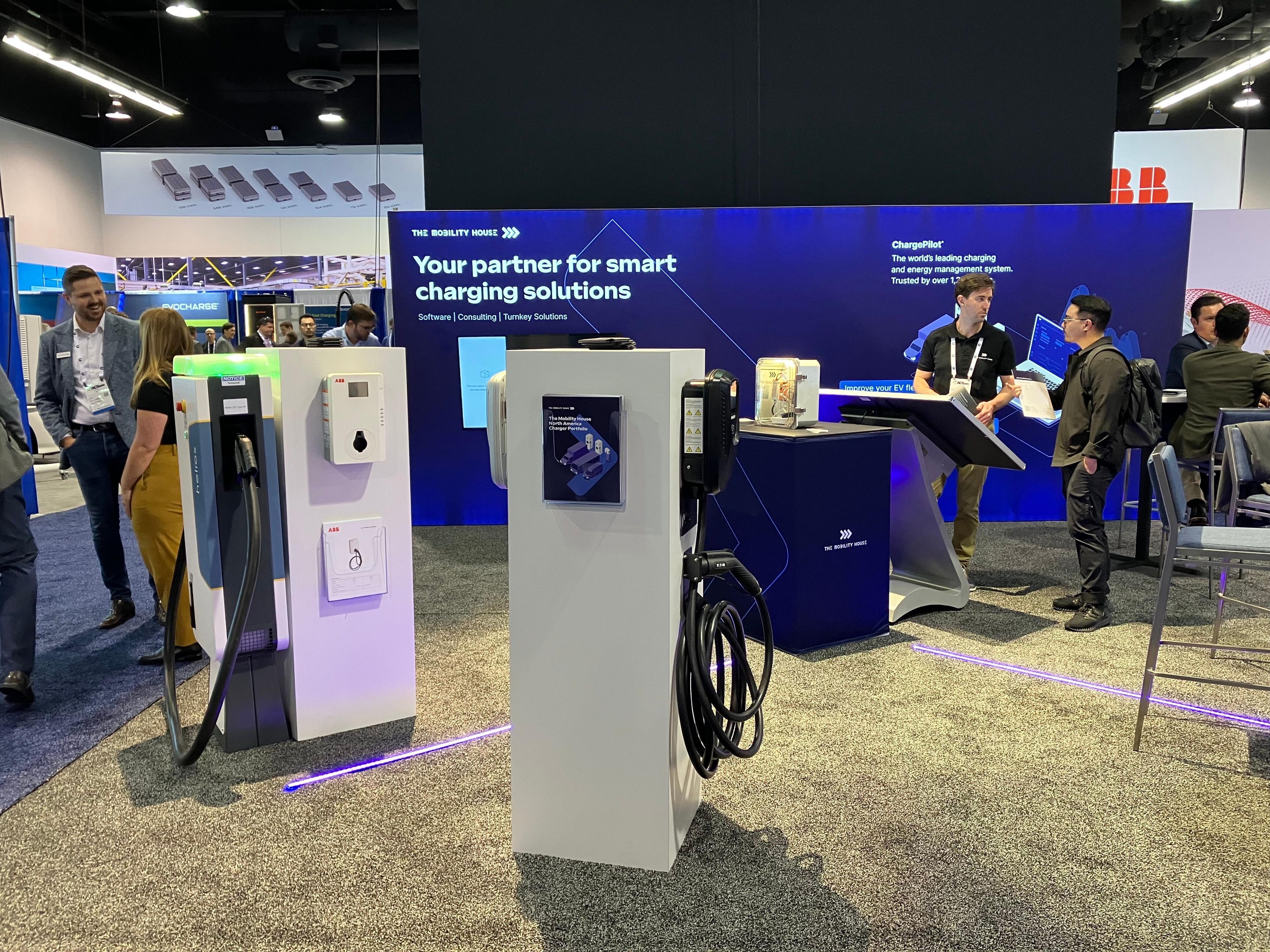ACT Expo is the once per year opportunity to see the whole commercial fleet industry together in one room, putting their best foot forward, and exchanging ideas, opportunities, rumors and hearsay. This year, the room was bigger than ever with a sold-out exhibition hall at Anaheim Convention Center, and the crowd of over 10,000 attendees too big for Long Beach, where it was previously held. Next year, it will move into an even bigger new home in Las Vegas. The Mobility House had 11 of our staff in attendance for the 4-day show, and we all wore out our vocal cords and our shoes connecting with everyone there.
Here’s what our team took away from the event this year:
1. The speed of adoption is accelerating 📈
Although transit and school buses have been early adopters of battery-electric EV technology, with many pilot projects, the commercial segment is ready to overtake very quickly. Electric cargo vans, pickup trucks, and heavy-duty trucks are all now commercially available from multiple manufacturers, and the regulatory policies are in place to mandate and incentivize fleets to transition with urgency.
We also heard from some that the biggest challenge to keeping up with this speed is power distribution, as some utilities are suggesting 3–5-year lead times on upgrades . Technological solutions like power control systems, including automated load management (ALM), will be critical to enable fleets to implement phase one of their charging infrastructure now within existing power limitations, until power distribution upgrades such as transformers, switchgears, or even substations are installed later to enable second and third phases.
2. Streamlined solutions are getting attention 👀
We met more than a few fleet operators who were overwhelmed by the vast show floor, and all the EV & charging technologies to evaluate and consider. There’s too much to learn, and too many different solutions to every unique use case. We heard repeatedly that fleet customers often want to choose a single provider and will expect satisfaction of delivery from that vendor. This validates the business model of end-to-end solutions providers such as Energy-as-a-Service from Alphastruxure , charging infrastructure provided by the OEM such as New Flyer does, or Charging-as-a-Service from The Mobility House.
3. The software ecosystem is growing 🌳
From telematics, to depot management, to charge management... How do these software systems fit together? Are they redundant, or do fleet operators need one of each? We tackled this question a short while ago for the transit tech ecosystem , and the information there is widely applicable to fleets of all kinds. In short, EV fleets are more modern than combustion fleets, not only because the energy source is different. Software is becoming an increasingly important tech tool for fleet operators, and you may need several of them to meet all of your needs.
As the number of software systems involved in fleet operations increases, communication and interoperability become critical. Every software system should use open standards and export APIs to communicate with each other and integrate.
4. Interoperability ties the technology together 🪢
All of the above observations reinforce this one. As fleets begin a journey of rapid deployment and scale, interoperability is the key to future-proofing . You may be ordering from one charger OEM now, but you may want to work with another one at some point in the future. Fleets are learning that they don’t want to lock themselves into a proprietary system that doesn’t use open standards, because options for future project phases become limited and constrictive.
5. What’s your system’s uptime?💡
This concept carries over from last year’s ACT Expo takeaways , but it is a critical one, and absolutely worth repeating: The charging system has got to perform reliably, and it has to deliver 99 times out of 100, or more. And, there needs to be specific and proactive processes in place to resolve issues when it doesn’t work.
Many EV fleet charging reliability issues are addressed not only by having the best hardware, but also with software, service, and equipment redundancy. For example, consider the remote start/stop/restart capabilities of ChargePilot, which comes with 24/7 error management and resolution as a standard feature. 24-hour monitoring provides first level error response that can resolve many of the more common failures.
For one transit agency customer using ChargePilot to manage charging for their electric buses in the United States, we were able to resolve over 150 charger errors in a six-month period, or nearly one per day, simply by rebooting the hardware remotely via ChargePilot. This was executed by our remote error management team, without any action required by the transit customer, at all hours of the day and night.
How would you quantify the value of 150 errors resolved without needing to dispatch a maintenance staffer?
For more stories of fleet electrification, check out our knowledge center.
To learn how ChargePilot might work for your fleet, contact [email protected]
